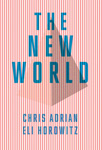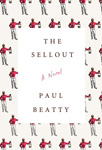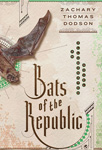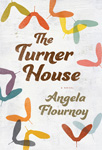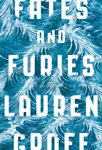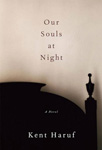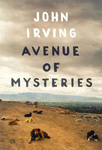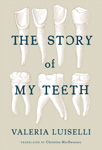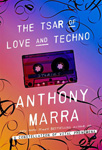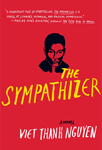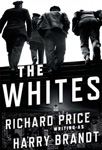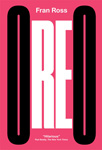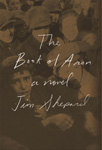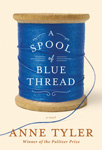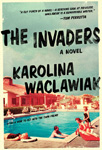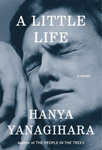by Chris Adrian and Eli Horowitz
Buy it at Powell’s »Daniel Wallace: I’ve never done this before, read two books more or less simultaneously and then judge one of them the lesser. The process reminds me of F., a woman I dated for a few dizzying months in the late ’90s, after my divorce. F. lived in a cabin in the woods and made fairy chairs out of twigs and moss. They were magical. She sold them at street fairs. I used to have a fairy chair but after a few years it died, the only chair I’ve ever had that did that. F. was dating me and another man; she said she loved us both, even though we could not have been more different. He was about 20 years older than me and knew how to use tools. His face was striated. I knew him a little bit, enough to know that of the two of us I was by far the better. Finally I made F. choose and I lost, for reasons she enumerated but which I’m not going to share here. I did not move on to the next round. It was a stunning turnabout. My heart was shattered at the time but I got over it and now I’m fine. I’m better than fine. I’m better than ever. End of story.
I tell this tale because this is the kind of thing you’ll find in The Story of My Teeth. Luiselli’s fun, somewhat scattered accounts of her protagonist, Gustavo “Highway” Sánchez Sánchez, often finish with that shrug-of-the-shoulders flourish: End of story. I liked that. The character is an auctioneer of teeth belonging to artists, philosophers, and writers, like Rousseau and Plato. Eventually he comes into the possession of the teeth of Marilyn Monroe, which he loves so much that he pulls out all of his own teeth and replaces them with her chompers. “For months after the operation, I couldn’t keep the grin off my face. I showed everyone the infinite line of my new smile, and whenever I passed a mirror or a shop window that reflected my image, I would raise my hat in a gentlemanly fashion and smile at myself.” Enough about that (she does this too, ending a section with “enough about that,” but that was me doing it, not her).
I want to say that The Story of My Teeth is a tour de force, even though I’ve never really been sure what “tour de force” means. After all, no one likes to talk about teeth (I think most people hate their own), so it’s an act of bravery to center an entire novel around them. The book is illustrated with photos and drawings, too, and I’m a fool for illustrations. It’s structured into short and snappy chapters, which is also my preference because I have the attention span of my cockapoo. Reading the book was almost entirely pleasant and diverting, like watching a fashion show: one model at a time strutting down the runway, and as soon as she disappears there’s another, and another, each one as striking as the last.
A Spool of Blue Thread was an excruciating reading experience. Not unlike a spool of thread, Tyler unwinds her long story sloooooooooooowly. It’s as if she doesn’t take into consideration the fact that each hour spent with her novel—which is really about nothing more than a family, there’s no real plot—is an hour closer to the grave. And I felt like I was dying for the first third of it. Honestly, there were pages I didn’t read, but simply passed over with my eyes.
Part of the problem is that she’s a perfect writer; her sentences are simple, easygoing, flawless. “Nora was a beautiful woman who didn’t know she was beautiful.” Nothing to love here, but nothing really not to like. Reading her is like driving slowly down a picturesque country backroad; there’s not a speed bump in sight, everything is pretty to look at, and even when something bad happens—you get stuck in a ditch, say, or run over someone’s grandmother, as happens here —it’s sad but really not all that sad, at least not in the moment. Every scene is rendered so beautifully I couldn’t help noticing how beautifully each scene was rendered.
These books, though they couldn’t have been more different, share an essential plotlessness. A Spool of Thread follows three generations of the Whitshank family, folks who moved from Nowheresville to Baltimore in the 1930s. We learn about every single person in this family in detail, which, again, makes me marvel at Tyler’s omniscience. How does she know so much about so many different kinds of people, men and women, and depict them all so well? The Story of My Teeth, on the other hand, doesn’t concern itself with characters: Ideas, playfulness, and of course teeth are much more important to Luiselli. Our hero “Highway” is just a vehicle for telling stories, having fun with language, and getting into bad situations—like when, at one point, he wakes up in a room surrounded by TV monitors picturing clowns, with all his (well, Marilyn Monroe’s) teeth gone.
A novel, better than any other art form, can reflect what the experience of being alive in the world is really like. We’re all storytellers because we see ourselves as being part of a story: Some of them are short, and some are a little longer, and then eventually there’s the single and singular narrative that is our lives. Novels speak to this innate truth. That’s why I picked A Spool of Blue Thread to move to the next round. It was slow going at first, but page by page it got better and better and by the end I felt like I had been a part of someone else’s life—actually, the lives of many people. The Story of My Teeth made me laugh, and it made me feel smart too, because I knew almost all of the folks whose esoteric teeth were sold. But it didn’t make me care more deeply about anything. A Spool of Blue Thread made me care more deeply about everything.
Match Commentary
By Kevin Guilfoile & John Warner
Kevin: The Story of My Teeth reminds me of a story.
About 15 years ago, in the very early days of McSweeney’s, Dave Eggers came to Chicago on a book tour for his memoir and wanted to throw a party for McSweeney’s readers. You and I and Neal Pollack (a friend of ours and, at the time, a Chicago writer closely associated with McSweeney’s) were charged with organizing this thing, which was going to be held at the Ethiopian Diamond, a restaurant in the Edgewater neighborhood. I had convinced a DJ to work that night for free, and Neal hired a clown to make balloon animals. But this was no low-rent birthday clown, and his price blew our entire and meager entertainment budget. Now, if the DJ found out that the clown was getting paid and he wasn’t, there was a chance the DJ was going to break my legs, so we came up with a way to raise money to pay the DJ and keep me ambulatory. We would auction off (or maybe it was raffle, more accurately) a bunch of worthless crap we didn’t want. It was stuff like my JV high school baseball letter, some random things Dave had in his backpack, a college essay written by you, etc.
The way we convinced people to pay for this junk, was to write stories about each of the items. They weren’t paying for the crap, they were paying for the story. They were paying for the memory.
Anyway, the party was a terrific success. Long before social media existed, hundreds and hundreds of people somehow found out about this party (some drove from as far away as Toronto). The Ethiopian Diamond sold a shit-ton of sambusa. The kick in the stomach, though, was that Ira Glass showed up and it turns out that Ira Glass is really good at making balloon animals, and he does it for nothing. So we didn’t need the clown, and wouldn’t have had to pay the DJ, either.
Son of a bitch.
That was a good time, though.
John: It was a great time, and the kind of thing I am entirely unlikely to do at my increasingly advanced age. It makes me glad there was a period where I was younger and more innocent and enthusiastic. Listening to you describe it and having the memories fall into place puts me in touch with a version of me I’m not sure I recognize.
I do wish I retained a copy of the auction catalog with the backstories of our junk. My memory is that it’s some of my most interesting work. Of course, if I had the catalog, I would see this is likely not the case, so I’d rather keep the memory than the thing itself.
Kevin: In The Story of My Teeth, Gustavo, self-proclaimed “best auctioneer in the world,” writes stories about each of the teeth he is going to sell, and just as we did, he auctions off the stories more than the objects themselves. These stories are really the centerpiece of the tale, and in a time when it seems like the relevance of fiction is constantly under assault, I found them (and the novel) to be powerful and relevant and charming.
I want to say something about the translation here, as well. Whenever I am reading a book in translation, I am left to wonder helplessly about whether a particular nuance is the intent of the author or the spin of the translator. (I know from experience that some translators are way more skilled and diligent than others). Luiselli seems to have a very close relationship with her translator, Christina MacSweeney, and we shouldn’t leave this book without mentioning her. It’s clear that they are true collaborators (there is even a fascinating timeline at the end of the book that is attributed exclusively to MacSweeney) and that both of them cared very deeply about how every aspect of this book was presented. I think writers especially will find this novel inspiring as they tackle what it means to write a novel, and the different forms that a novel may take.
Here’s a story about The Story of My Teeth. There was a juice factory in Mexico that somehow funded a prestigious art gallery. Luiselli was hired to write a piece for a catalog for the gallery and she (along with MacSweeney) ended up writing this novel in collaboration with the factory workers. The finished text was then read aloud in the factory, apparently to help pass the time as they worked.
That seems as improbable as anything that happens in the novel. But it’s a testament to the power of story, and also charming as hell.
John: I enjoyed how Judge Wallace’s verdict holds a tension of its own. I was certain that Tyler was going down until the final turn and declaration of the winner.
Kevin: Have we ever had a judge describe a novel as an “excruciating reading experience” and then advance it over a book he calls (or “wants to call”) a “tour de force”?
John: We see one of these every year where a judge admires a book, but has deeper feelings for another, feelings that are, in many ways inexplicable, but shouldn’t really require any defense—the same way Judge Wallace’s ex, F., made the objectively wrong choice all those years ago.
It’s true, Tyler’s books are very low on incident. In fact, the entire novel really only has one event of note, and yet when you close the last page, you’ve felt something having been immersed in that world. Anne Tyler isn’t a particularly flashy writer, but if you ask a bunch of regular readers, I think you’re likely to have a fair number telling you that she’s one of their favorite authors.
Kevin: Can I mention one thing that I forgot to bring up last time? In the play-in match, the crew from Bob’s Burgers had a bit of fun over the cover for A Spool of Blue Thread, and it’s something that bothers me, too. I was a creative director at an ad agency for 11 years, and one of our fundamental rules was, “If you say it, don’t show it.” The words “A Spool of Blue Thread,” written over the image of a spool of blue thread, would have caused me to walk right past this novel in a bookstore 10 out of 10 times if that cover didn’t also have the words “Anne Tyler” written on it.
John: We close our opening round tomorrow. Nothing against The Invaders, but I’m putting on my The Sellout jersey and facepaint and crossing my fingers for my personal book of the year to move forward.

The official 2016 Tournament of Books T-Shirt by book designer Janet Hansen. Order yours!


